
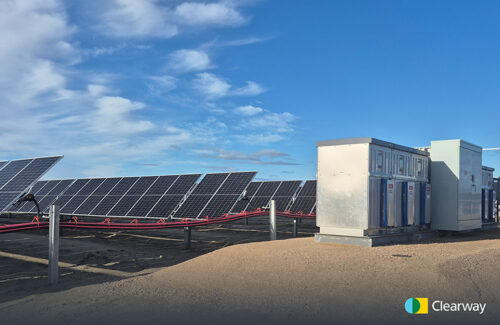
Clearway Energy Group announced that its Rosamond South 1 project located in Kane County, California has entered commercial operation. The 117 megawatt energy storage and 140 megawatt solar complex will generate enough electricity annually to supply over 72000 households and deploy low-cost energy during peak demand periods. We are pleased to put Rosamond South into operation and continue to provide reliable, low-cost energy to Kern County and the wider region, "said Valerie Wooley, Senior Origin Vice President at Clearway. Thank you to our esteemed customers for partnering with Clearway to help achieve your clean energy goals and bring more reliable energy to California. ” Rosamund South 1 (also known as Golden Fields Solar IV LLC) has signed long-term contracts with multiple California power service entities, including MCE, University of California, Rancho Cucamonga Municipal Power, Eastern District Power Authority, Moreno Valley City, and Constellation Energy. This is MCE's second large-scale solar plus energy storage project, marking another important step towards accelerating the state of California towards 100% renewable energy within 15 years, "said Dawn Weisz, CEO of MCE. This project enhances the reliability of our renewable energy supply by providing electricity when people need clean energy the most. At the same time, it reduces emissions, improves air quality, and creates green employment opportunities for sustainable households. For everyone, this is a win-win situation More than 400 union workers participated in the construction. McCarthy Construction Company, along with labor partners including the 220 Labor Union, Southwest Carpenter Regional Committee, Operations Engineer 12 Local Union, IBEW 428 Local Union, Blacksmith 416, and 433 Local Union, jointly led this construction.
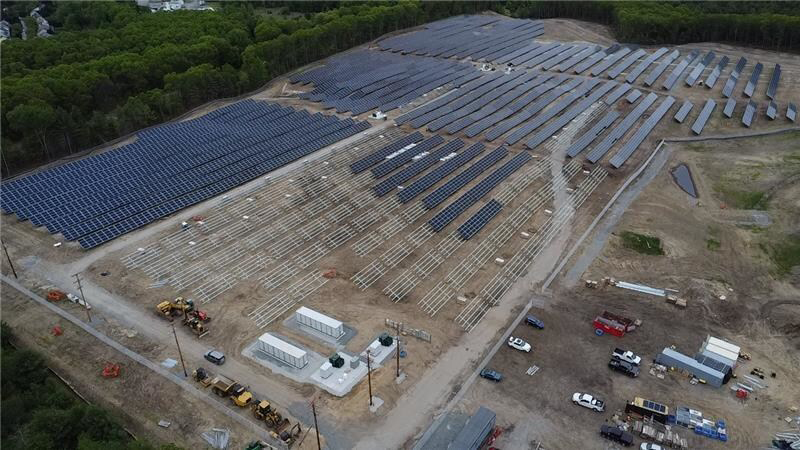
Distributed Energy Infrastructure (DEI) has completed a 7.1 MW solar+4 MW battery storage project on a Superfund website in Acton, Massachusetts, which was previously occupied by a chemical manufacturing facility. DEI collaborates with Terrasmart to safely construct the system on contaminated sites. Excavation work should be minimized as much as possible, and electrical infrastructure should be mainly designed on the ground to avoid interference and soil pollution. The system is designed around existing structures (including old concrete slabs) to reduce site damage. Projects like Acton demonstrate how to responsibly bring clean energy to communities while addressing the challenges of historically polluted land development, "said Sean Harrington, President and CEO of Distributed Energy Infrastructure. By transforming brownfield into productive solar and energy storage sites, we are expanding access to renewable energy, strengthening local power grids, and revitalizing otherwise unusable land As a brownfield project located on previously unusable land, the Acton project has brought significant community and environmental benefits. It repurposed a contaminated Superfund website for productive purposes, preserving farmland and open spaces, and created nearly 40 local job opportunities during construction. This project combines community solar models with battery energy storage to provide clean energy and enhance the resilience of the local power grid. In addition, the project has expanded the town's tax base through increased revenue and supported Massachusetts' SMART and clean peak standard goals, as it reduces pressure on the power grid during seasonal demand peaks. Brownfield transformation is a powerful means of expanding clean energy access while addressing industrial pollution legacy issues, "said Graeme Dutkowski of Syncarpha Capital, the project developer. This project demonstrates how DEI's safety first and thoughtful approach to constructing brownfield solar projects can transform an underutilized site into a reliable source of electricity and local economic value
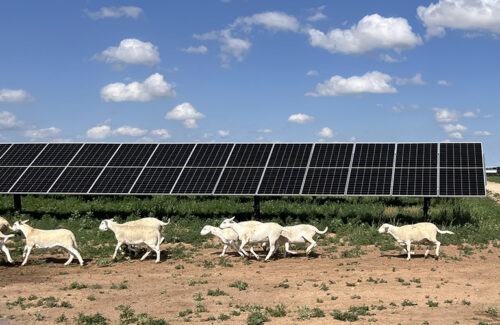
A review conducted by SUN DAY campaign on data just released by the Federal Energy Regulatory Commission (FERC) reveals that the combination of solar and wind energy accounted for 88% of the newly added U.S. electric generating capacity in the first eight months of 2025. In August alone, solar energy provided two-thirds of the newly added capacity, marking the second consecutive year in which solar energy has maintained a monthly lead among all energy sources. Both solar and wind energy added more capacity than natural gas. Within three years, the combination of all renewable energy sources may exceed 40% of installed capacity. Solar energy accounted for two-thirds of the newly installed power generation capacity in August, and 73% so far this year. In the latest monthly Energy Infrastructure Update report (data as of August 31, 2025), the Federal Energy Regulatory Commission (FERC) stated that a total of 48 solar "units" with a total capacity of 2,702 megawatts (MW) were commissioned in August, accounting for two-thirds (66.4%) of the new generating capacity added during the month. This represents the second-largest data point for monthly solar capacity additions in 2025, second only to January, when 2,945 MW of new capacity was added. The latest facilities include the 517.3 MW Outpost Solar and Energy Storage Project in Webb County, Texas; the 280.0 MW Gibson Solar Project in Gibson County, Indiana; the 254.0 MW Richley Energy Farm in Lake County, Tennessee; the 204.0 MW Luna Valley Solar Project in Fresno County, California; and the 200.0 MW Flat Fork Solar Project in Monroe County, Arkansas. In the first eight months of 2025, the total installed capacity of 505 newly added large-scale solar facilities (i.e., >1 MW) reached 19,093 MW, accounting for 73.4% of all newly added power capacity. Solar energy has been the largest source of monthly new power generation capacity for two consecutive years: from September 2023 to August 2025. During this period, the total utility-scale solar capacity increased from 91.82 GW to 156.20 GW. No other energy source has added as much new power generation capacity. For example, wind energy added 11.16 GW, while the net increase in natural gas was only 4.36 GW. As of this month, renewable energy accounted for 88% of the newly added capacity. In the first eight months of 2025, the combination of solar and wind energy (plus 4 MW of hydropower and 3 MW of biomass energy) accounted for 88.0% of the newly added capacity, while natural gas accounted for only 11.9%. The remaining net new capacity came from petroleum (20 MW) and waste heat (17 MW). Solar and wind energy account for nearly a quarter of the utility-scale power generation capacity in the United States; all renewable energy sources combined account for more than a third. The share of large-scale solar power generation in the total installed capacity (11.62%) is now nearly on par with that of wind energy (11.82%). If the recent growth rate persists, the c...
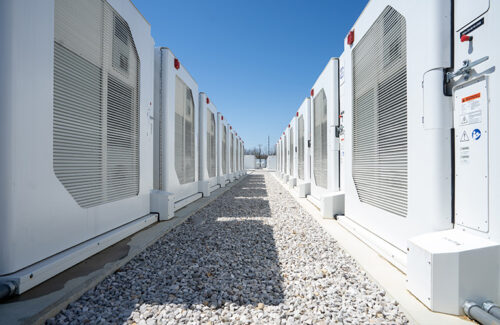
On October 29th, the Illinois House of Representatives passed a bill that will facilitate the construction of a 3 GW large-scale battery energy storage facility in the state, according to WAND. By incentivizing new energy storage construction and VPP programs, the Clean and Reliable Grid Affordability (CRGA) Act aims to help the unstable grid better cope with the surge in demand brought about by new data centers and increased electrification. The bill will also require utility companies to establish peak and off-peak electricity pricing policies, encouraging homeowners to reduce their demand on the power grid during peak hours by utilizing solar energy combined with energy storage technology, according to the Illinois State Senate News. "We applaud the Illinois House of Representatives for passing the Clean Reliable Grid Affordable Act and look forward to the Senate discussing the bill before the veto session concludes," the Illinois Solar Energy Association stated in a press release. "This vote demonstrates that Illinois recognizes the importance of embracing solar energy, energy storage, and virtual power plants. Not only will the CRGA reduce energy costs in Illinois, but it will also ensure that Illinois' clean energy industry is protected from the recently passed federal policies that are threatening millions of jobs and billions of dollars in economic activity nationwide."
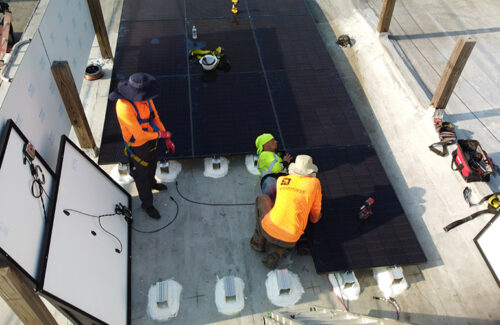
On October 24th, the youth empowerment organization YEAH Philly, in collaboration with RE-volv, Good Energy Collaborative (GEC), and GreenBrilliance, hosted a community celebration to mark the completion of its new 12-kilowatt solar array, which will fully meet YEAH Philly's electricity needs. Thank you to Billie Eilish and her fans. Through Eilish's Changemaker Program, RE-volv received a grant through REVERB to assist YEAH Philly in installing solar energy and achieving these savings. "Solar energy is the future of non-profit organizations," said Kendra Van De Water, co-executive director of YEAH Philly. "Not only because of cost savings, but also because it's a way for us to invest in our community." Since its establishment in 2018, YEAH Philly (Youth Empowerment for Advancement Hangout), a community-based organization led by black individuals, has provided sustainable job opportunities or paid internships for 227 young people, offered court advocacy to 175 young people, and provided free groceries to over 17,000 community members. The celebration included food, live music, an exhibition of resources from local non-profit organizations, speeches, and a ribbon-cutting ceremony. Billie Eilish was honored as a project supporter at the event, through her Changemaker initiative. RE-volv, a national nonprofit organization that develops and delivers solar energy projects for community service, received funding from the Changemaker Fund, which helped facilitate the solar installation at YEAH Philly. The Hammond Climate Solutions Foundation's Solar Moonshot program also provided financial support for the project. The solar energy project at YEAH Philly was led by members of the RE-volv Solar Ambassador program and GEC students from Swarthmore College. The RE-volv Solar Ambassador program is a clean energy leadership training initiative for college students seeking careers in clean energy. "We have all the solutions to address the climate crisis and provide affordable, reliable, and clean energy to communities, but not everyone knows this," said Andreas Karelas, Executive Director of RE-volv. "When cultural icons like Billie Eilish use their platform to support solar energy projects like YEAH Philly and raise awareness about solutions, it is one of the most important things anyone can do.". ” Yes, the solar energy project in Philadelphia is part of an ongoing collaboration with the Good Energy Collaborative (GEC), focusing on cultivating youth and community leadership. Together, they offer hands-on workshops on solar energy, green jobs, and urban agriculture, allowing young people in West Philly to see themselves reflected in the clean energy movement. "These are precisely the types of collaborations we need to create sustainable solutions for communities most severely impacted by climate change," said Giovanna Di Chiro, Director of the Good Energy Collaborative and Professor of Environmental Studies at Swarthmore College. "Engaging young people in prac...
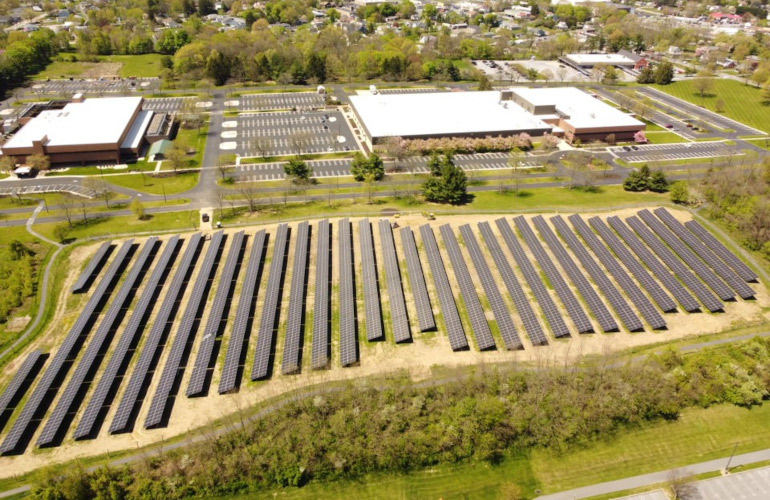
The Coral Reef Partnership recently completed a 1.94 MW ground-mounted solar system within the pedestrian pathway of D&H Distributing's corporate headquarters. The project, located in Harrisburg, Pennsylvania, utilizes brackets from DCE Solar. "D&H has always been committed to investing in environmentally friendly and sustainable business practices," said Michael Schwab, Co-President of D&H. "We have adopted energy-saving solutions and methods in our corporate offices and distribution centers, and actively seek out available green certification technologies. Now, with the launch of our new solar park, we further demonstrate our commitment to clean energy, sustainability, and innovation." "This solar park is one of the larger community systems in the region, designed to directly provide clean, renewable energy to D&H facilities," said William Hines, project manager of Coral Reef Partners. "The system covers approximately five acres and includes 3,888 modules, with the ability to offset a significant portion of the company's energy use. The successful completion of the project reflects the team's resilience and the increasingly important role of solar energy in supporting regional energy independence."
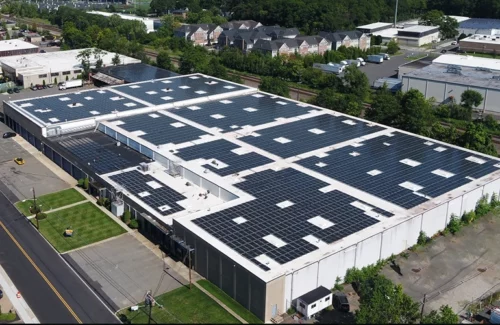
The New Jersey Economic Development Authority (NJEDA) recently approved a new program aimed at reducing greenhouse gas emissions and energy costs. The Retrofit NJ grant program, which focuses on reducing emissions through retrofitting, optimization, fuel switching, and innovative technologies, will support multi-pronged, large-scale retrofit projects that enable comprehensive energy improvements in buildings, campuses, and multi-building facilities, including solar energy plus energy storage. The new funding expands the efforts of the existing NJ Cool program. "New Jersey is leading the nation in building a cleaner and more resilient future," said Governor Phil Murphy. "The RETAIL NJ funding program reinforces our commitment to reducing emissions, lowering energy costs, and driving innovation across our state. By investing in retrofit projects, we are not only protecting our environment, but also creating high-paying jobs and reducing costs for families and businesses.". ” RETAILT NJ will provide grants ranging from $2.5 million to $12.5 million to commercial, industrial, and institutional building owners undertaking renovation projects with a minimum total project cost of $5 million. Eligible projects must include at least three clean energy or electrification components, such as solar energy, energy storage, heating electrification, refrigerant replacement, and energy efficiency upgrades. RETAILT NJ will also provide support for projects implementing Thermal Energy Networks (TENs), an emerging technology that can significantly reduce emissions across multiple buildings. This program is the largest TENs government construction grant program in the country, with each project eligible for up to $12.5 million. It demonstrates New Jersey's strong leadership in advancing cutting-edge technological solutions to address climate change. "New Jersey is committed to addressing climate change through impactful projects aimed at reducing our carbon footprint and promoting a greener state," said Catherine Coviello, Chief Economic Transformation Officer of the New Jersey Economic Development Corporation. "Today's approval of the RETAILT NJ program allows us to expand access to energy efficiency upgrades, strengthen our communities and economy, while helping businesses reduce energy use and save money.". ” Currently, the NJ Cool program provides financial assistance to commercial, industrial, and institutional building owners and tenants who undertake retrofit construction projects for existing buildings in state-designated Overburdened Buildings Communities (OBCs) and adjacent neighborhood census tracts, in order to reduce greenhouse gas emissions during operations. The Retrofit NJ program, which has received unanimous praise, will utilize $75 million in Regional Greenhouse Gas Initiative (RGGI) funding. Of this funding, 50% will be allocated to institutional applicants who are located in Opportunity Business Centers (OBCs) and/or have submitted project appli...
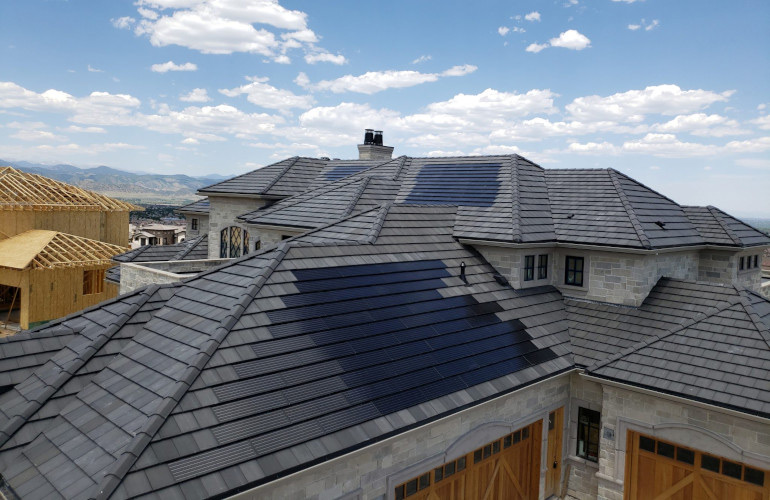
In the United States, the solar tile business has always been an uphill battle – even the “leaders” CertainTeed, GAF Energy, and Tesla might agree. But New York-based SunTegra has carved out a niche in the high-end residential market and has successfully operated over the past decade, navigating through Chinese tariffs, the pandemic, and the expansion of domestic manufacturing for non-traditional solar products. Oliver Koehler, the current CEO of SunTegra, is terminating his passion project, stating that the events of the past year have reached his final limit of patience. Sunshine integrated solar tile “If you don’t have the money to keep the company going, you’re just stagnating. The irony is, unfortunately, that these Chinese companies have the money,” he said. “It’s really a shame. I just want to make better-looking solar panels.” SunTegra began producing silicon-based solar shingles and tiles in 2014. These products are fixed on roof panels in an overlapping manner and feature a patented ventilation design to reduce heat and increase energy production. The SunTegra shingle is a 2x4-foot photovoltaic panel with an injection-molded frame, boasting a peak power of 114 watts. Solar shingles are ideally installed during the construction of new homes or during roof tile replacement, which is why SunTegra has found a customer base that seeks solar shingles with superior aesthetics. Koehler's experience at BP Solar and SunPower has made him a seasoned veteran in the industry, equipped with the advantage of success, but the challenges began immediately. "We have been affected by tariffs since our first batch of containers were loaded onto the ship, which actually dates back to 2014," he said. "At first, we and others had suppliers in China at that time. Then we switched to Suniva solar cells from the United States because there were some brewing tariffs on Chinese-made solar products during the Obama era, which should have allowed us to bypass these tariffs. However, the Department of Commerce changed the rules at the last minute, stating that any panels coming out of China would be taxed, regardless of whether they contained American solar cells. Suddenly, we discovered this change, and we already had containers in transit.". ” Assembling solar tiles in China using American silicon panels quickly proved impractical. Then SunTegra tried assembling in Indonesia, but logistics there were equally challenging. Therefore, Koehler turned to Mexicali, Mexico, to produce custom solar panels for SunTegra. "We purchased some [solar tile] equipment from the soon-to-be-closed Dow Solar and transferred it to Mexico," he said. "I signed the lease contract a week before Trump began attacking the North American Free Trade Agreement, and a year later, new solar tariffs took effect, which also targeted Mexico and Canada." A SunTegra installation The North American Free Trade Agreement (NAFTA) established a free trade area that eliminated tariffs between Canada, Mexico...

Two large-scale battery energy storage systems, each providing 20 megawatts of power and 80 megawatt-hours of energy storage, are now online on the East Coast of Virginia. Funded by Climate First Bank and developed in collaboration with Patterson Enterprises and battery manufacturer Great Power, this investment will enhance the resilience of the power grid and the sustainability of the communities in Exmore and Tasley. The LiFePO4 BESS project supports the Virginia Clean Economy Act's goal of achieving 100% clean energy by 2050, and generates profits through energy arbitrage by storing electricity during periods of abundant supply and releasing it during peak demand periods. "In our years of business activities, we have never been involved in a project more important or exciting than battery energy storage projects," said Harold Patterson, CEO of Patterson Enterprises. "The US power grid now needs energy storage more than ever before, and this demand will only become more severe as industries develop and electricity consumption increases to meet the growing demand. We are passionate about the work we do and proud to collaborate with visionary institutions like Climate First Bank, which shares our commitment to a sustainable energy future.". ” These projects will help prevent power outages and voltage drops during peak usage periods, reduce fluctuations in electricity rates for residents and businesses, and provide voluntary donations totaling $200,000 to local and regional charitable organizations.
Categories
New Products
Tin Roof Rapid Solar Mounting System with Hanger Bolt Read More
Residential Small Solar Easy Bracket Kit for Home Balcony Read More
Automatic Single Pile Solar Tracker with 10 PV Panels Read More
Angle Adjustable Aluminum Easy Solar Panel Bracket for Garden Read More
Intelligent Single Post Dual Row Solar Tracking System Read More
5000ES Solar Off-Grid Energy Storage Inverter Supplier Read More
Multi Drive Double-Sided Single Axis Tracker System Read More
© Copyright: 2025 Xiamen Wintop New Energy Tech Co., Ltd.. All Rights Reserved.

IPv6 network supported
Friendly Links:
Integrated Solar System